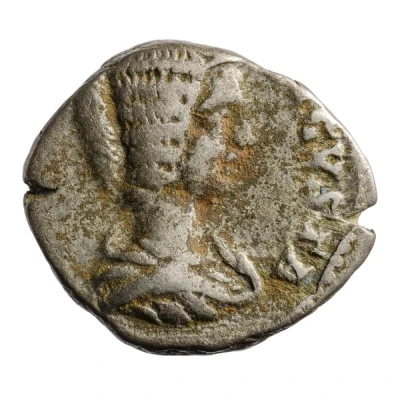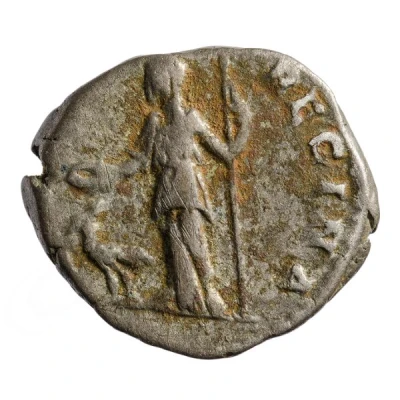


© Münzkabinett der Universität Göttingen (CC BY-NC 4.0 DE)
Denarius - Julia Domna IVNO REGINA; Juno
| Silver | 3.1 g | 16.5 mm |
| Issuer | Rome › Roman Empire (27 BC - 395 AD) |
|---|---|
| Empress | Julia Domna (193-211) |
| Type | Standard circulation coin |
| Years | 196-211 |
| Value | 1 Denarius |
| Currency | Denarius, Reform of Augustus (27 BC – AD 215) |
| Composition | Silver |
| Weight | 3.1 g |
| Diameter | 16.5 mm |
| Shape | Round (irregular) |
| Technique | Hammered |
| Orientation | Variable alignment ↺ |
| Demonetized | Yes |
| Updated | 2024-10-05 |
| Numista | N#269917 |
|---|---|
| Rarity index | 92% |
Reverse
Juno, veiled, draped, standing left, holding patera in extended right hand and sceptre in left hand; at feet, left, peacock.
Script: Latin
Lettering: IVNO REGINA
Translation:
Iunoni Reginae.
To Queen Juno.
Comment
Mass varies: 2.7–3.72 g;Diameter varies: 16–17.63 mm;
Example of this type:
Münzkabinett der Universität Göttingen
Source:
Online Coins of the Roman Empire (OCRE)
Interesting fact
The Denarius - Julia Domna (IVNO REGINA; Juno) coin was minted during the reign of Emperor Septimius Severus (193-211 AD), who was known for his extensive reforms and military campaigns. The coin's design features a portrait of Julia Domna, the emperor's wife, on the obverse (front side), and an image of Juno, the Roman goddess of marriage and childbirth, on the reverse (back side). The coin's silver content and weight (3.1 grams) were also carefully regulated to ensure consistency and accuracy in trade and commerce. Overall, this coin is a fascinating piece of history that provides insight into the economic, social, and political climate of the Roman Empire during the 2nd century AD.

